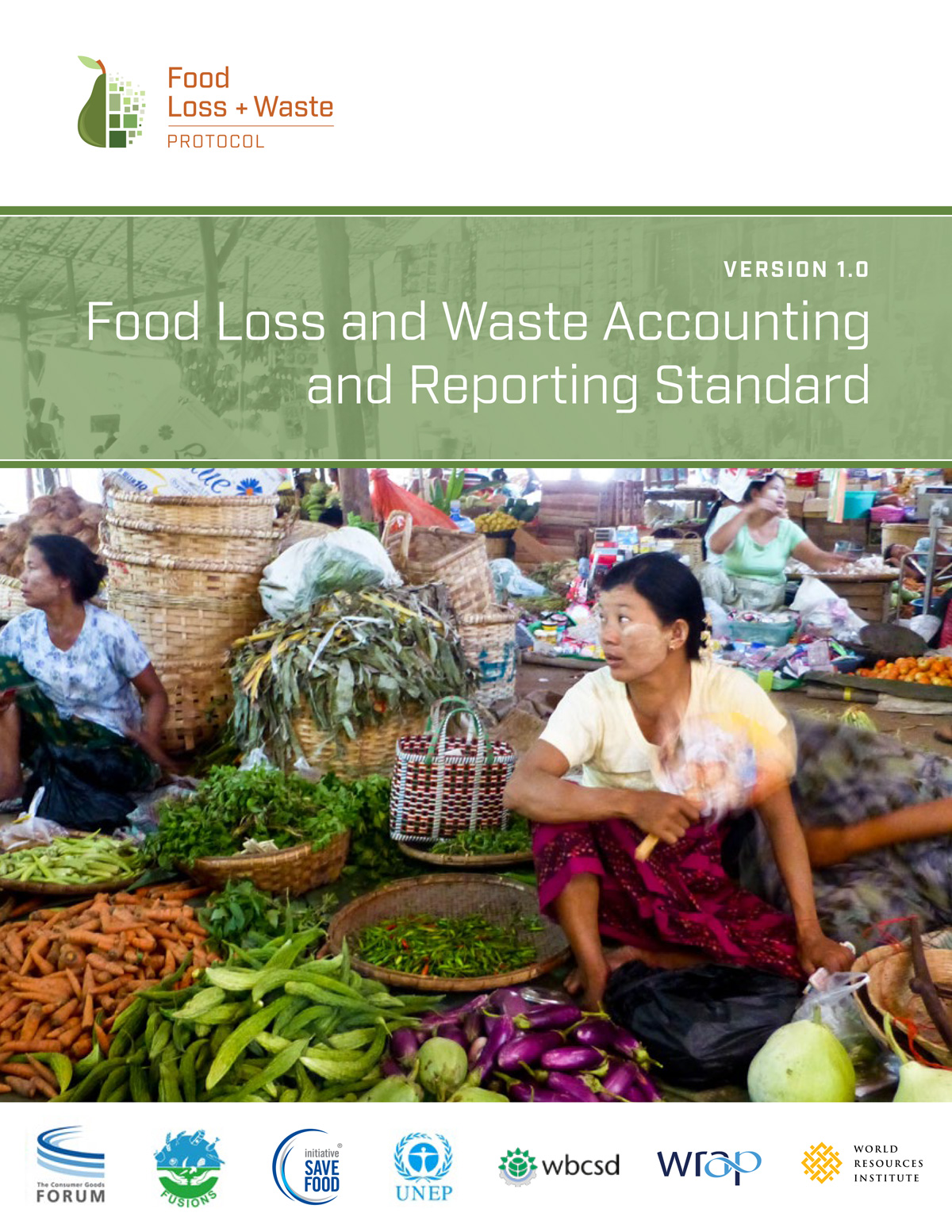
Quantifying and reporting on food loss and waste can feel overwhelming. What should be measured and how do you measure it? The Food Loss and Waste Accounting and Reporting Standard, also known simply as the FLW Standard, provides a common language and clear requirements.
Whether you’re a restaurant or farm, a retailer or manufacturer, a city or a country, using the FLW Standard allows you to develop an inventory based on your specific needs and goals.
The simplest way to start using the FLW Standard is by reading the short Executive Summary, which lays out the key definitions and requirements.
- FLW Standard Executive Summary ENG | CHI | JAP | POR | SPA
- FLW Standard ENG | SPA
Download & Explore the FLW Standard
Part IOverview
Part IOverview
1. INTRODUCTION
1.1 Purpose and Vision
1.2 The Need for an Accounting and Reporting Standard
1.3 How the Standard Can be Used
1.4 Guiding Principles and Design of the Standard
2. DEFINITION OF TERMS AND APPLICATIONS
2.1 Standard Terminology: Shall, Should, and May
2.2 Material Types and Possible Destinations
2.3 Definitions of “Loss and Waste”
2.4 How the Standard Addresses the Environmental, Nutritional, or Financial Implications of FLW
2.5 How the Standard Applies to Certain Components of the Food Supply Chain
2.6 Using the Standard to Make Comparisons among Entities
3. GOALS OF QUANTIFYING FLW
3.1 Mandatory and Voluntary Goals
3.2 The Implications of Choosing Different Goals
4. SUMMARY OF STEPS AND REQUIREMENTS
4.1 Accounting and Reporting Steps
4.2 Summary of Requirements
5. PRINCIPLES OF FLW ACCOUNTING AND REPORTING
5.1 Explanation of the Principles and Guidance on Their Application
5.2 Guidance: Disclosing and Justifying Exclusions
Part IIMain Requirements
Part IIMain Requirements
6. ESTABLISHING THE SCOPE OF AN FLW INVENTORY
6.1 Guide to Chapter 6
6.2 Defining the Scope of an FLW Inventory
6.3 Timeframe
6.4 Material Type
6.5 Destination
6.6 Boundary
6.7 Related Issues
6.8 The Influence of Goals
7. DECIDING HOW TO QUANTIFY FLW
7.1 Selecting a Method for Quantifying FLW
7.2 Overview of Quantification Methods
Part IIIOther Requirements and Recommendations
Part IIIOther Requirements and Recommendations
8. COLLECTING, CALCULATING, AND ANALYZING DATA
8.1 Sampling and Scaling up Data
8.2 Quantifying Material Types (Food and Associated Inedible Parts) Separately
8.3 Accounting for Packaging
8.4 Analyzing FLW Data across Multiple Stages in a Food Supply Chain
8.5 Confidentiality Considerations
9. ASSESSING UNCERTAINTY
9.1 Reporting Degree of Uncertainty
9.2 Qualitative Descriptions
9.3 Quantitative Assessments
9.4 Considerations when Communicating Results
10. COORDINATING THE ANALYSIS OF MULTIPLE FLW INVENTORIES
10.1 Activities and Goals of Coordinating Entities
10.2 Specifying the Scope and Methodology across Multiple Inventories
10.3 Guidance: Coordinating a Government-Level FLW Inventory across Sectors
11. RECORDING CAUSES OF FLW
11.1 Identifying Causes
11.2 Identifying Drivers
11.3 How to Record and Report Causes and Drivers
12. REVIEW AND ASSURANCE
12.1 Key Terms in Assurance
12.2 The Assurance Process
13. REPORTING
13.1 Guidance on Reporting
13.2 Required Information
13.3 Optional Reporting
14. SETTING TARGETS AND TRACKING CHANGES OVER TIME
14.1 Selecting a Base Year
14.2 Identifying the Scope of the Target
14.3 Choosing a Target
14.4 Monitoring Performance Against Targets
14.5 Recalculating Base Year FLW
Part IVAppendices
Part IVAppendices
APPENDIX A. APPROACHES TO SAMPLING AND SCALING UP DATA
A1 Introduction
A2 Guidance on Sampling
A3 Guidance on Scaling up Data
APPENDIX B. SEPARATING MATERIAL TYPES: DATA SOURCES FOR CONVERSION FACTORS APPLIED TO INDIVIDUAL ITEMS
B1 Introduction
B2 Choosing a Data Source for Conversion Factors
B3 General Sources of Data for Conversion Factors
B4 Sector-Specific Sources of Data for Conversion Factors
APPENDIX C. NORMALIZING DATA
C1 Introduction
C2 Selecting a Normalization Factor
C3 Reporting and Communicating about Normalized Data
APPENDIX D. EXPRESSING WEIGHT OF FLW IN OTHER TERMS OR UNITS OF MEASUREMENT
D1 Introduction
D2 General Considerations
D3 Environmental Impacts
D4 Nutritional Content
D5 Financial Implications
APPENDIX E. QUANTIFYING AND REPORTING THE WEIGHT OF FOOD RESCUED
E1 Introduction
E2 Steps for Quantifying the Weight of Food Rescued
E3 Guidance: Defining and Describing the Scope
E4 Guidance: Selecting the Method(s) for Quantifying the Weight
E5 Other Considerations Related to Food Rescue